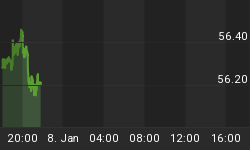European scientists have announced plans to start mining the moon as early as 2025, though what they’ll be extracting is neither gold nor diamonds, but waste-free nuclear energy thought to be worth trillions of dollars.
The goal is to place a lander on the lunar surface to mine and process regolith for useful materials such as water, oxygen, metals and an isotope called helium-3, which may prove useful for fueling future fusion reactors.
Regolith, Universe Today reported, is a dust-like material that covers the lunar surface and is the result of billions of years of meteor and comet impacts. If anyone ever lives on the moon, they could use the regolith to build habitats for a base.
Europe isn’t the only one getting on board of the lunar mining train. Both India and China have floated ideas about extracting Helium-3 from the Earth’s natural satellite.
The mission will be in charge of the European Space Agency in partnership with ArianeGroup, Popular Mechanics reported. It will also count with the participation of Part-Time Scientists, a German group and former Google Lunar XPrize contestant.
Europe isn’t the only one getting on board of the lunar mining train. Both India and China have floated ideas about extracting Helium-3 from the Earth’s natural satellite. Beijing has already landed on the moon twice in the 21st century, with more missions to follow.
There are an estimated one million tonnes of helium-3 on the moon, though only 25 percent of that could be brought to Earth, Gerald Kulcinski, director of the Fusion Technology Institute at the University of Wisconsin-Madison and a former member of the NASA Advisory Council told Bloomberg last year. Related: Buffett Still Not Sold On Bitcoin
But that’s enough to meet the world’s current energy demands for at least two, and maybe as many as five, centuries, said the expert said, who estimates that helium-3 is worth almost $5 billion a tonne.
No longer science fiction
After being considered mostly a science-fiction tale, governments are now rushing to implement programs and legislations that allow them to join the race for mining in the space.
In 2015, former U.S. President Barack Obama signed a law that grants U.S. citizens rights to own resources mined in space. The ground-breaking rule was touted as a major boost to asteroid mining because it encourages the commercial exploration and utilization of resources from asteroids obtained by U.S. firms.
Geologists believe asteroids are packed with iron ore, nickel and precious metals at much higher concentrations than those found on Earth, making up a market valued in the trillions of dollars.
Shortly after, Luxembourg launched an official initiative to promote the mining of asteroids for minerals. The tiny European country, which has been studying possible involvement in the sector since 2013, aims to become Europe’s centre for space mining.
Related: Walmart’s $20 Billion Buyback Spree Sparks Outrage From Senate
Canada is also eying the moon. Last year, Northern Ontario-based Deltion Innovations partnered with Moon Express, the first American private space exploration firm to have been granted government permission to travel beyond Earth's orbit, on future opportunities in outer space.
Some of the space ventures in the works include plans to mine asteroids, track space debris, build the first human settlement in Mars, and billionaire Elon Musk's own plan for an unmanned mission to the red planet.
Geologists as well as emerging companies, such as US-based Planetary Resources, a firm pioneering the space mining industry, believe asteroids are packed with iron ore, nickel and precious metals at much higher concentrations than those found on Earth, making up a market valued in the trillions of dollars.
By Mining.com

















